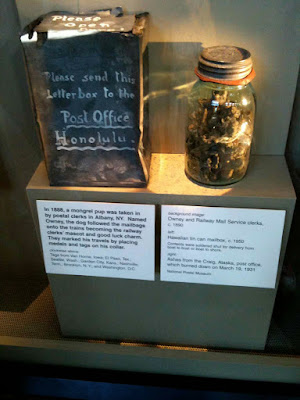
Because correspondence is communication by letters, I don't see why the definition should exclude written communications between individuals that are face to face at the time of delivery. Enter: the personal calling card. Lacking a card of my own, I set out to create one that represented me as an individual. That card needed to honor the traditions of the past, while still being innovative and fresh... with a dash of mystery. Really, I wanted a card that was artistic, yet functional.
A QR (quick response) code is a lot like a barcode, in that it contains information that is displayed when read. However, unlike a barcode, a QR code can carry up to 4000 characters of information, direct a device to a URL, load contact information, or queue up GPS coordinates. Already big in Japan, QR codes are slowly making their way over to the States.
My QR code doesn't hold very much information, only my name and personal e-mail address. So the card doesn't make full use of the QR technology, but that wasn't really my objective. With these cards I wanted to blend the hi-tech with the low-tech. I think it's amazing that early 20th century technology can be used to transmit information directly to modern, 21st century devices.
Unfortunately, I can really only hand these cards out to other technological early adopters, as only smart phones, such as the iPhone and Android devices, can run the software necessary to read QR codes. However, while smart phones and QR codes become ubiquitous, I'll still continue to hand out my QR cards to the people I meet. If anything, they'll be a conversation starter. After all, isn't good conversation what correspondence is all about?





